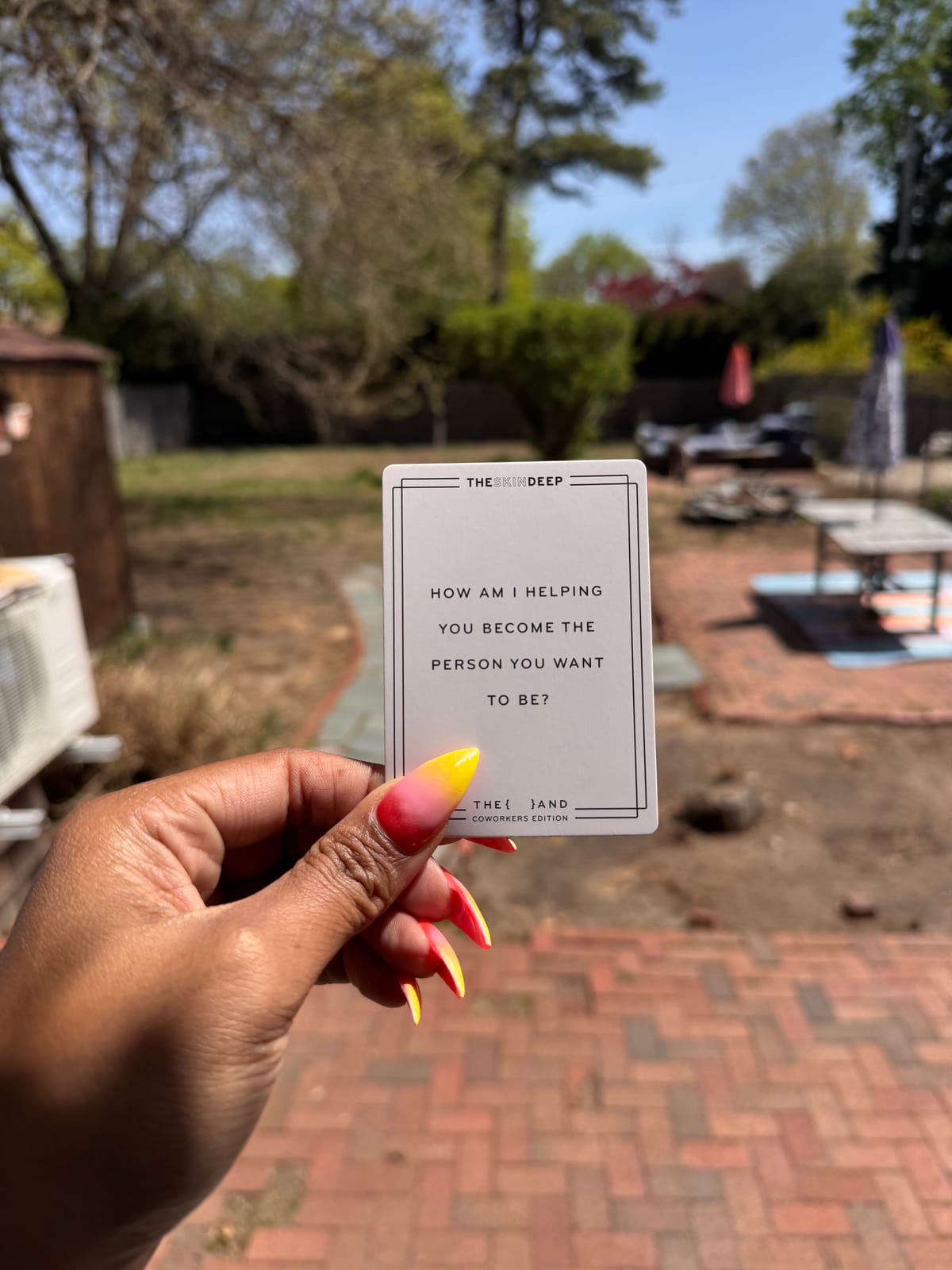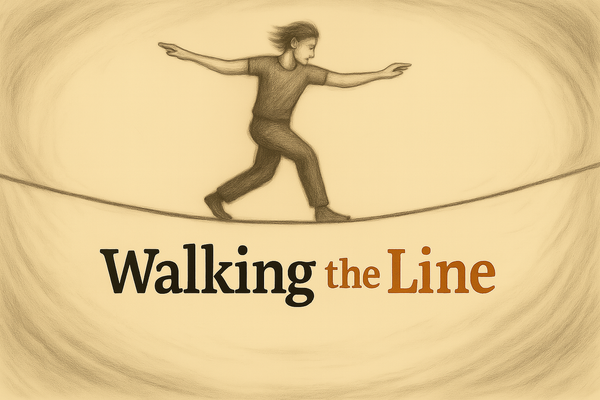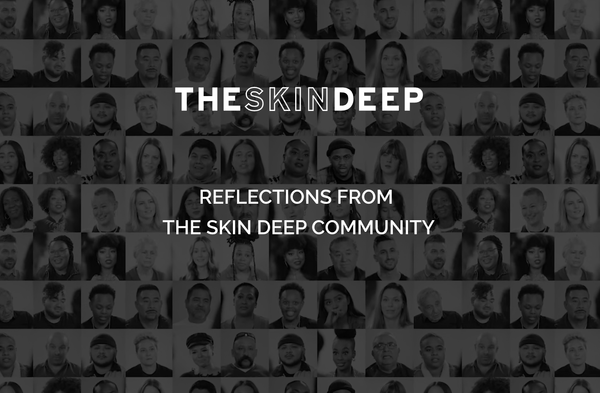Navigating Hard Conversations
Every time we choose to have honest conversations, one where we speak from our experiences and remain open to other’s realities, we make it easier and safer for our peers to do the same.

Communication is one of the hardest things we do as humans, and not for the reasons you may think. It’s not because we don’t know how to talk to one another, we talk all the time. We talk in emails, in meetings, in the proverbial break room, and even in our silences. However, communication is more than just talking or casual slack conversations.
True communication requires trust, it requires vulnerability, and it requires accountability, and that is much harder.
In the workplace it often feels like building trusted communications systems is even harder because so many of us are doing the dance around showing up and understanding how much of ourselves we are allowed to show to the corporate world. We are taught to avoid making a scene, avoid engaging in our emotions, and most importantly, fit in.
However, none of these strategies bode well for secure communication systems. Humans are inherently emotional beings and it’s important for us to be aware of our emotions, and the emotions of others if we intend to create organizations and teams that feel safe to show up fully.
If we are not taught to name tension, or name the emotion an interaction evokes within us, it will be impossible to build environments where the communication systems are trusted. Unfortunately, for the history of corporate America we have been conditioned to protected people’s comfort over our own mental health, safety and identities.
Real communication isn’t built through faking the funk, it’s built through being willing to sit with the things that make us uncomfortable. We have to be willing to have hard conversations, broach sensitive topics and even disagree.
Communication can’t just be about work events, or the latest slack integration. Communication involves disagreements, values misalignments, interpersonal friction, inclusion and emotional labor, and we have to find ways to communicate about these things without falling victim to our own egos. Leading with our ego inevitably leads to avoidance, defensive and ultimately running from the topic at hand, instead of sitting with it.
Most of us are craving deep, meaningful connectedness at work but we are unsure how to achieve it, even more so for those of us who hold marginalized identities. We want to work in environments where our peers are empathetic, honest and direct, and we want to be safe to communicate that way in return.
Unfortunately, so many of us are not safe to share our truth, our torment, our happiness with the world because it is deemed as political, as inappropriate, as a distraction. As long as we vies some people’s truth as meaningful, and others as a distraction, we will never be able to move forward.
So how do we build cultures where authentic conversations aren’t reserved for leadership, or people with dominant identity?
I thought you’d never ask.
First, we acknowledge the truth: communication is emotional labor.
Talking about tough topics, regardless of the topic, is hard, it is emotionally taxing and it is work. Work is more than sending your silly little emails, or updating your spreadsheets. Communication is labor, so let’s just get that out of the way. Talking about the hard topics, especially the ones that are tied to power dynamics, money, conflict, identity or uncertainty aren’t just a cognitive task, they are emotional tasks as well.
We are trying to regulate our nervous systems, while listening to respond, engaging in the conversation, putting down our assumptions, and trying to retain the information, which is not a light task.
Psychological safety plays a huge role in how we are able to show up in these moments. In teams and organizations where people feel safe to take risks, they are more likely to feel safe to communicate differently. Google’s Project Aristotle famously found that psychological safety was the #1 predictor of high-performing teams, not experience, not IQ, not leadership titles. Safety. The ability to say, “I’m not sure,” or “I disagree,” or “I made a mistake,” without fear of retaliation or shame.
Creating that kind of safety takes more than a one-time training or a well-written values statement.
It takes daily, intentional communication.

We need to redefine what authentic means.
Authenticity has famously become a buzzword over the last few years. Authenticity isn’t the warm, fuzzy parts of people, or the bright colored hair. Authenticity is not just the parts of people that you’re willing to look directly at, but it is the sum of their parts. Real authenticity is the hard stuff, the good stuff, the stuff we feel shame about, the stuff that turns our stomachs. Authenticity is all of the experiences that have shaped who we are.
Authenticity is about owning your emotions, your experiences and speaking up about them, even when your voice shakes. Real authenticity at work looks like showing up with curiosity, vulnerability and knowing that you don’t always have the answers, and that you’re not always right.
Authentic communication balances honesty and compassion. It shows up to the conversation with curiosity instead of avoidance, and knowing that no one wins when we let our egos lead the conversation.
How do we prepare our teams?
We teach the skills. We cannot expect people to know what they don’t know or hold them to a standard that we haven’t taught them.
Many people avoid hard conversations because we genuinely have no idea how to have to them, or where to start. We worry about saying the wrong thing, putting our foot in our mouth and making things worse. That fear is a valid emotion, and a signal that we need to provide more tools in people’s toolboxes around communication. It’s not enough to tell people we expect them to have hard conversations, we have to teach them how to have them.
Some of these skills look like:
- Active listening. Demonstrate full attention and reflect back key points to ensure understanding.
- Curiosity-driven inquiry. Ask open-ended, non-leading questions to gather more context.
- Impact acknowledgment. Recognize and validate the effect your words or actions may have had.
- Focused communication. Avoid generalizations or unrelated issues.
- Assertive expression. Use clear “I” statements to convey your experience without blame.
A framework I often use is the Ladder of Inference. The Ladder of Inference is an easier way to track how quickly we jump from a single observation to creating a whole narrative (often rooted in bias, stereotyping, and preconceived feelings about the situation). When we allow ourselves to slow down our thinking, and lead with curiosity instead of assumption, we make space for honest dialogue and deeper connections.
So now what?

We normalize the messiness of communication.
The human experience *messy*, and it doesn’t get less messy no matter how old you get, how much you earn, or your title. So, we might as well normalize that. The human experience is messy. Communication is messy, and even with all of the planning, skills and outlines in the world, conversations won’t always go as we meant them to.
You’ll say the wrong thing. You’ll hurt someone’s feelings, you will get your feelings hurt. You’ll misunderstand, and be misunderstood. That is human.
But this isn’t about getting it “right”, or “winning”. It’s about our willingness to come back, repair, learn, and to say sorry when we need to. That’s the real work of communication, not running from it, but embracing the mess.
If we want stronger teams, healthier workplaces, and deeper trust, we need to start listening to our peers and trying to understand them for who they really are.
We need to talk about the things that feel uncomfortable. It’s important to talk about people’s lived realities, experiences, and truly build connectedness beyond our casual work interactions.
The Skin Deep helps us to have those conversations, by creating the space and the prompts to kick these conversations off without the pressure of trying to start it ourselves. Every time we choose to have honest conversations, one where we speak from our experiences and remain open to other’s realities, we make it easier and safer for our peers to do the same.
And maybe, just maybe, we make communication become a little less hard.
P.S. If this piece resonated with you and you're looking for a way to bring more meaningful dialogue into your workplace, I highly recommend The Skin Deep’s {THE AND} Coworkers Edition card deck. It’s designed specifically to help teams move beyond surface-level chatter and start having real conversations, about work, collaboration, growth, and even the tough stuff. Whether you’re building a new team or strengthening an existing one, these cards can open the door to deeper trust, understanding, and connection.
Because better conversations lead to better teams.
About the Author:
Madison Butler is a workplace culture strategist, speaker, and advocate known for championing equity, authenticity, and psychological safety at work. As the founder of The Employee Journey Blueprint and co-founder of The Cashmere Club, she’s spent her career helping organizations build environments where people feel safe to have the hard conversations that lead to real growth. Madison believes that discomfort is where change begins, and she’s made it her mission to help leaders and teams navigate tough topics with empathy, courage, and a little bit of humor.





